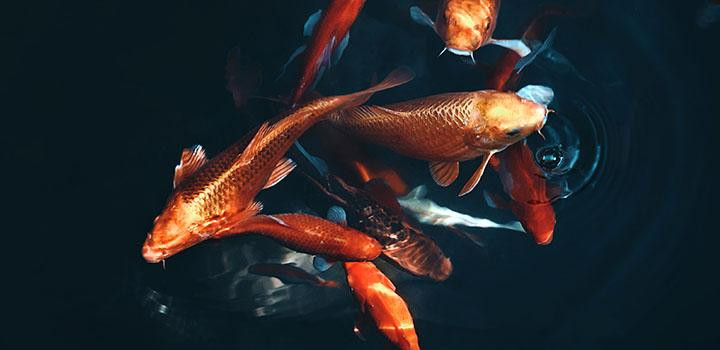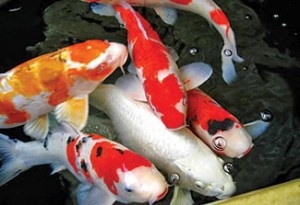
Pond Fish
Posted by Grange Co-op on 1st Apr 2015
A pond just doesn't seem complete without a few fish cruising around beneath its surface. Not only do they look great, but they help reduce the insect population by feeding on the waterborne larvae of annoying insects like the mosquitoes and gnats. There are many ornamental fish suitable for a pond but the two most popular varieties are goldfish and Koi.
 If you are stocking your pond, make sure you select your fish from a quality supplier like Grange Co-op. Fish from a local supplier will usually suffer less relocation stress due to the fact that the water is more likely to have come from the same source as your home, and your fish will be in transit for just a short period of time.
If you are stocking your pond, make sure you select your fish from a quality supplier like Grange Co-op. Fish from a local supplier will usually suffer less relocation stress due to the fact that the water is more likely to have come from the same source as your home, and your fish will be in transit for just a short period of time.
If you are starting a new pond, allow the water to sit for 24 to 48 hours to let the chlorine evaporate. Use a chlorine, chloramines and heavy metal neutralizer for all new water additions (even well water may have heavy metals), look for a water conditioner for your fish that will help prevent transplant shock and that will stimulate them to produce a healthy slime coat. Make sure that you have plenty of aeration for your pond in the form of a pump with a filter, a fountain, waterfall or decorative spitter and live plants.
It is an especially good idea to have an external filter system in place since goldfish and koi are very "dirty fish" - that is they produce large amounts of ammonia and spend a lot of time rooting in the muck at the bottom of the pond. True Koi can be very expensive, so most people will use some feeder Comets (small goldfish) as "sacrificial fish" until they get their water balance correct.
It is not uncommon for the first batch of fish to die while the water ages and the pH values fluctuate. You can usually get five to ten feeder Comets for what you will spend on one small Koi. Some people never graduate beyond Comets, since they are pretty and can grow quite large. Be careful not to overstock your pond. A general rule for a well filtered and aerated pond is one inch of fish per gallon of water. Remember that your fish will grow. Even a little one inch Comet can grow to six inches in just a few seasons, and many Koi will mature at eighteen to twenty four inches.
Introduce your fish into your pond slowly by first floating the carry-home plastic bag in the pond for an hour or so, to allow the two water temperatures to equalize, then gently release your fish. Try not to introduce your new fish on either very hot or very cold days. Ideally you should wait until after the extreme weather fluctuations of early spring, and before the fall's irregular weather begins. Like aquarium fish, pond fish depend on their owners to provide a balanced diet to keep them healthy. Both Goldfish and Koi are omnivorous so animal as well as vegetable food must be included in their diet.
A good pet store like Grange Co-op Pet Country will have a selection of quality flake, freeze dried and frozen foods for your pond fish. You will find many of the foods are formulated for different water temperatures and growth stages. Feed a Spring/Summer formula when the water temperatures are the warmest, and a fall formula when things cool down. Don't feed your fish at all when water temperatures drop below 35œ to 40œ F, since they will be dormant for the winter. Even though they may be swimming around they can't digest well when the water temperatures are too low and feeding them can kill them.
You can tame your fish by always feeding them at the same spot; they may eventually learn to eat from your hand - a good way to check them for loss of condition or disease. Take care not to overfeed them though, uneaten food will decay and cause water quality problems.
